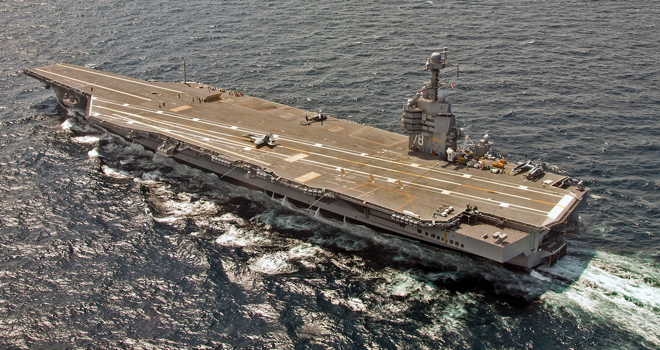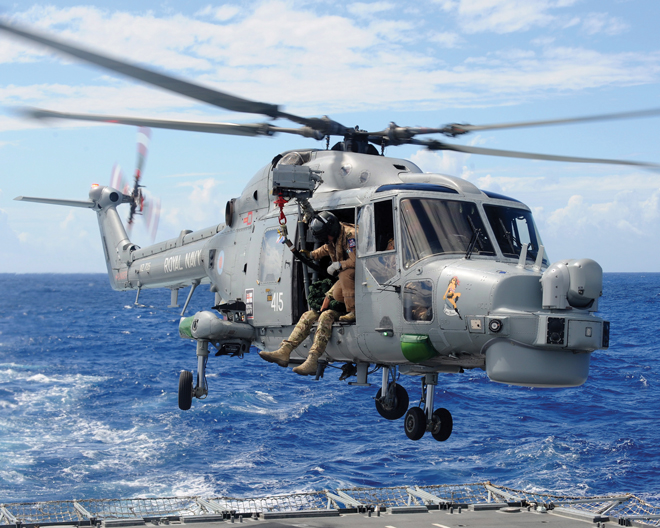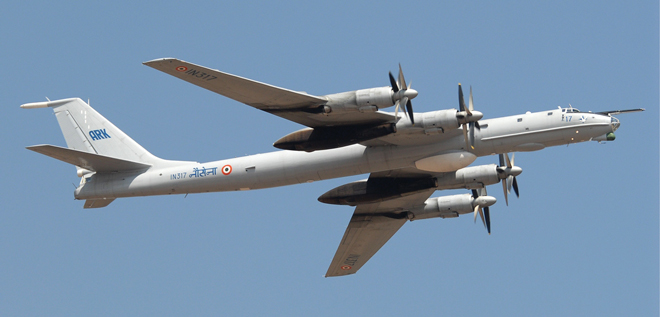
On 22 July, the U.S. Navy’s newest aircraft carrier, USS Gerald R. Ford (CVN-78), was officially commissioned into service. Displacing some 100,000 tons, the 1,092-foot warship has a beam of 134-feet with a flight deck width of 256 feet. The crew is expected to number roughly 4,500 personnel including the air wing and staff. Two A1B nuclear reactors and four shafts power the carrier to a top speed of more than 30 knots. The Ford is expected to boost sortie generation rates by 33 percent over Nimitz-class carriers. Other improvements include a new dual band radar, electromagnetic aircraft launch system, and advanced arresting gear. The Ford will be able to carry an air wing of more than 75 aircraft. At least two additional sisters, to be named the John F. Kennedy and the Enterprise, are planned for service by the late 2020s.

On 23 March, the British Royal Navy retired the HMA.8 Lynx naval helicopter from its Fleet Air Arm. First operational in 1976, the long-serving shipboard Lynx was updated in the 1990s resulting in the 7,275-pound HMA.8 variant, which carried more powerful engines and sensors than its predecessors. Despite the helicopter’s relatively short range, the Lynx could be armed with lightweight torpedoes or the battle-proven Sea Skua antiship missile. Variants of the Lynx supported British forces in the Cold War, the Falklands conflict, the 1991 Gulf War, and more recent counterdrug, counterterrorism, and counterpiracy operations around the globe. The Lynx proved quite successful in British service as well as on the export market, where Lynx helicopters continue to fulfill maritime missions in Algeria, Brazil, Denmark, France, Germany, Malaysia, Oman, Portugal, South Africa, South Korea, and Thailand. The HMA.8 has now been replaced in British service by its more modern cousin, the Lynx Wildcat.

This past spring, India retired its final Russian-built Tu-142M maritime patrol aircraft after 29 years of naval service. The land-based aircraft were originally based on the Tu-95 strategic bomber, nicknamed “Bear” by NATO. The Modified Tu-142M aircraft, known as the Bear-F, initially entered the Soviet fleet in the 1970s. Eight of the Tu-142Ms were later transferred to India beginning in 1988. The 162-foot long Tu-142M Bear-F has a wingspan of 168-feet and a maximum takeoff weight of 185 tons. Powered by four counter-rotating turboprop engines, these long-range aircraft have an unrefueled flight endurance of more than 16 hours. Typically fitted with radar, magnetic anomaly detection gear, sonobuoys, and torpedoes for submarine hunting, they were operated by a crew of ten. The Tu-142M aircraft have now been replaced in Indian service by the U.S.-built Boeing P-8I Poseidon, but more than two dozen of the Tu-142s still remain in Russian naval service.
Mr. Wertheim, a defense consultant in the Washington, D.C., area, is the author of the 16th edition of The Naval Institute Guide to Combat Fleets of the World, available from the Naval Institue Press (see www.usni.org).


